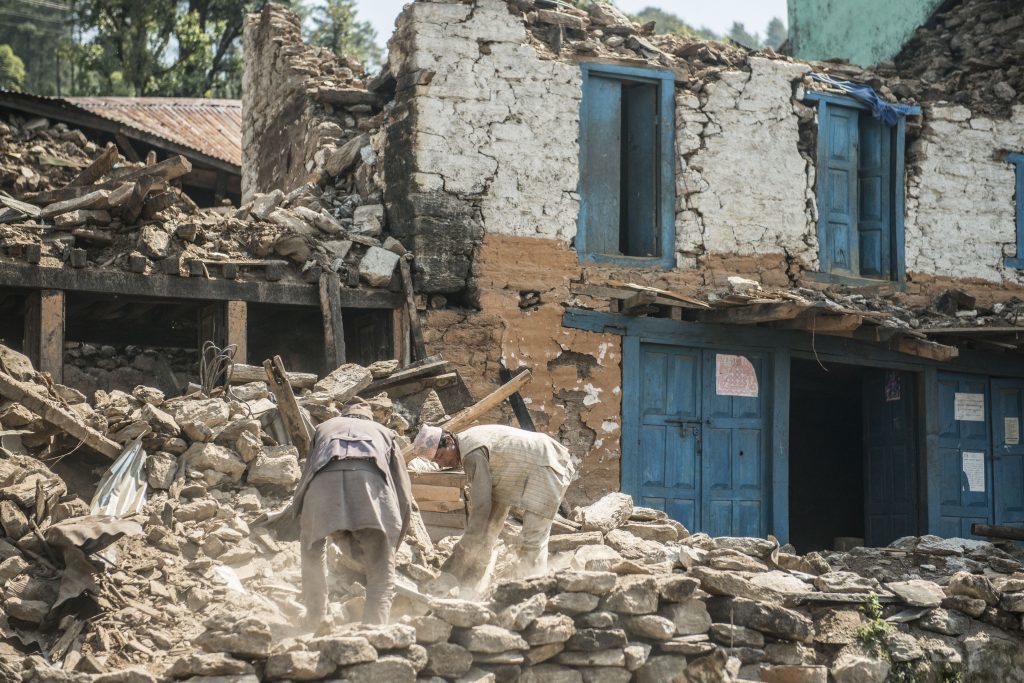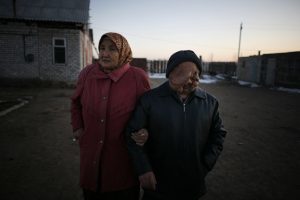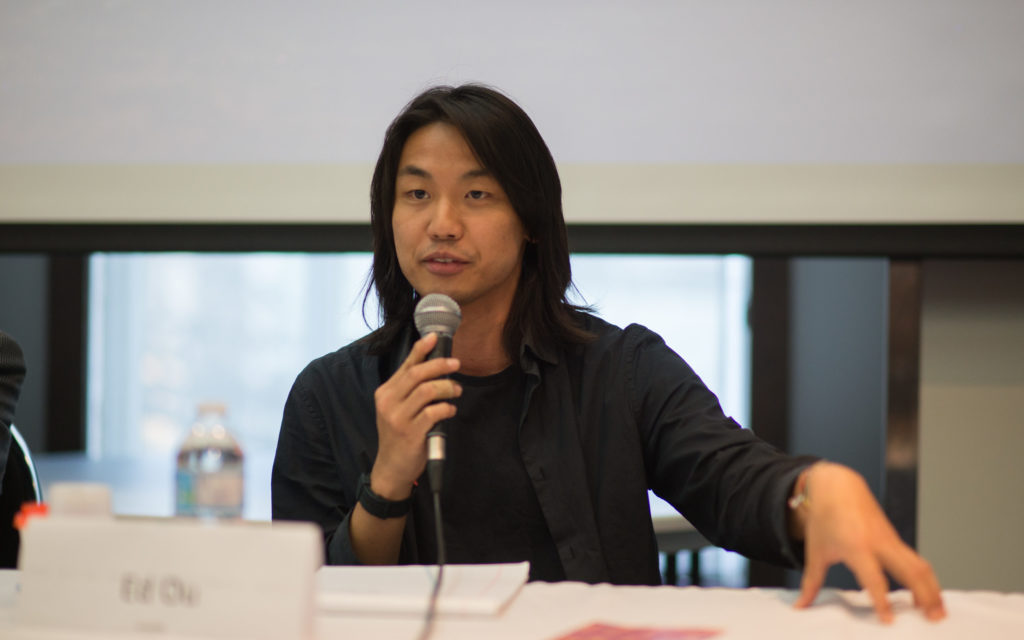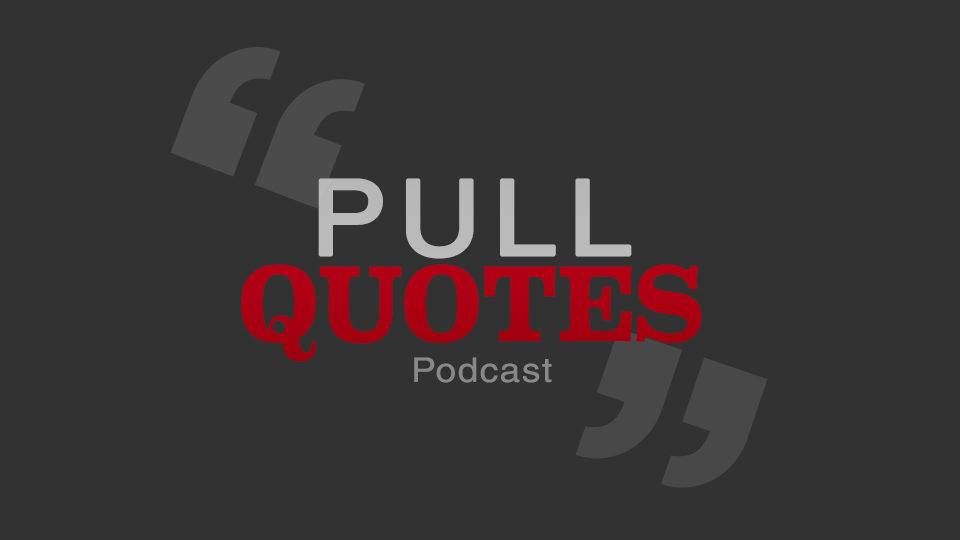Images of natural disasters are often devastating–but what’s it like to be behind the camera? Three photojournalists talk about the ethics and emotions of covering catastrophe, at the Ryerson Review of Journalism’s recent conference. Plus, visual journalist Ed Ou talks about photographing people affected by radiation from nuclear weapons testing in Kazakhstan.
With voices from:
- Ed Ou, visual journalist currently with NBC News in New York.
- Peter Bregg, photojournalist and Ryerson professor
- Blake Fitzpatrick, chair of Ryerson’s Faculty of Image Arts.
- Co-hosted by Annie Arnone, senior digital editor at the Ryerson Review of Journalism
Flooded streets. Buildings in shambles. Devastated families. It’s often the images of natural disasters that sear into the public’s memory.
“There can be no disaster without representation,” said Blake Fitzpatrick, starting his presentation at the Ryerson Review of Journalism ‘On Disaster’ conference.
But photographing disaster is a difficult task for journalists–and raises questions about ethics, representation, and emotional consequences.
Listen to the full photography panel from the "On Disaster" conference
[rev_slider_vc alias=”photo-panel-full”]
Peter Bregg Photos
Blake Fitzpatrick on the "tropes" of disaster imagery
[rev_slider_vc alias=”podcast-8-blake”]
Hear more from journalist Ed Ou
[rev_slider_vc alias=”ed-ou”]Ethics behind the camera
When it comes to ethics during disaster, Fitzpatrick said, the stakes are high. People at their most vulnerable, and photographers are shooting from a position of privilege.
But Fitzpatrick said it may also be a privileged decision to decide not to take that picture.
“Often people will look to journalists to really be their witness, because they are not perhaps in a position to be their own witness,” he said.
Photojournalist Peter Bregg says the media “does take advantage of disaster”–and it can feel ghoulish. But, he’s there to show the rest of the world what’s happening, which can encourage help for the people he’s photographing.
Photography can be a way of “amplifying people’s pain” so the world can react productively, noted Ed Ou.
Fitzpatrick encourages people to ask, what’s changing for the subject by taking this photo? Is the answer is nothing, there may be some ethical issues worth considering.
“See the person beyond the tragedy”
When Ed Ou first goes into a place he wants to photograph, he often won’t bring a camera. He tries to connect with people as human beings first, building up rapport and trust.
At the Ryerson Review conference, he showed pictures from his work in Kazakstan, where about 2 million people were exposed to radiation through nuclear weapons testing during the Cold War.
Ou tried to spend as much as he could with people, to get a sense of who they are as humans.
He photographed a child who can’t walk because of the effects of radiation, but whose mother taught her to dance with her hands.
Ou asked one man, born without eyes and with facial deformities, what made him happy. The man told him he loved playing piano–so that’s how Ou photographed him.
See more of Ed Ou’s photographs here
“I try as much as I can to empower people so they aren’t seen as victims, but as people with their own agency,” said Ou. He says he’s constantly struck by how resilient and strong people are.
When covering disaster or conflict, journalists often try to extract a narrative of tragedy out of people, he said. “But really, what we see is hope.”
“One thing that’s really important for journalists is to see the person beyond the tragedy.”
Emotional tolls
When Ed Ou first started covering disaster, he blocked himself from feeling “the right” to feel. The people he was photographing always had it worse, Ou thought, and he could always go home at the end of a shoot. But as the years went by, the effects of that trauma accumulated.
“It’s only when you’re back in your normality that you realize just how abnormal your experiences were,” said Ou, noting that it’s the smallest, most unexpected things that trigger him once he’s home.

Photographers discuss the emotional toll of covering disaster.
[rev_slider_vc alias=”emotions”]There’s a belatedness to trauma, said Blake Fitzpatrick. When you’re in the field, “you’re sort of in reaction mode. But when you’re back home you’re front and centre with the radical difference between those two worlds.”
Understanding trauma behind the lens (J-Source)
It’s important to take stock of what you’ve just seen, said Ou, and think about how you’re being affected by your experiences. It’s not fair to bring that baggage to the next thing you cover.



